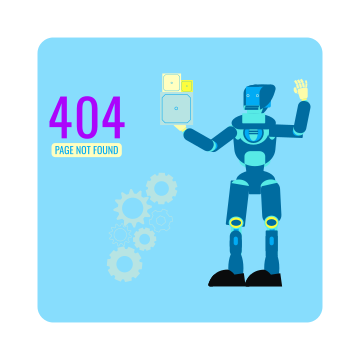From Actor to RPA Developer: An Interview with Sean Ellner
Sean Ellner is a unique individual in the world of technology. Sean started his career as an actor, but a suggestion from his parents, both engineers, led him to explore the world of Robotic Process Automation (RPA).
As RPA was just starting to gain traction in the industry, Sean saw the potential in this field and decided to pursue it. He began his journey as an intern at WinAutomation where they wanted to automate some of their repetitive tasks.
Sean's early start in the field proved to be beneficial as he quickly progressed from an intern to a more experienced RPA developer. His hard work paid off when WinAutomation was acquired by Microsoft, providing Sean with even more opportunities to grow and develop his skills.
We had the opportunity to sit down with Sean and discuss his thoughts about what’s next for the RPA space and advice for organizations regarding their RPA estate.
What do you think is next on the automation horizon?
I think the future of automation will focus on making the technology even more accessible and user-friendly. As automation continues to evolve, it will become easier for people with limited technical knowledge to utilize and benefit from these tools. This trend will likely lead to wider adoption and integration of automation in various industries and aspects of daily life. Additionally, advancements in areas like AI and machine learning will significantly shape the future of automation.
What are your thoughts on the state of Citizen Development and when will we see it become more widespread?
Citizen Development has the potential to grow rapidly, but ease of use is a concern that needs to be addressed. Adoption may increase when it becomes more accessible to those with limited technical knowledge.
What are the biggest challenges facing automation programs in the near term?
One of the biggest challenges facing automation programs in the near term is governance. With many individuals and organizations developing bots simultaneously, it can be difficult to ensure that they align with a common set of standards and guidelines. This can lead to inconsistencies, inefficiencies, and even security risks. To overcome this challenge, many organizations are creating a "center of excellence" that sets and enforces standards for automation initiatives. This approach can help ensure that all automation efforts are aligned and consistent and adhere to established best practices and guidelines. Additionally, having a clear governance structure in place can help organizations avoid potential legal and compliance issues, and ensure that all automation initiatives align with their overall strategic goals and objectives.
What would be your advice to an RPA program just starting to set up and implement their Center of Excellence?
My advice for an RPA program just starting to set up and implement a Center of Excellence would be to focus on the bigger picture. Consider the best practices you want to establish and enforce across your organization, as well as your plan for scaling the program over time. It's important to keep in mind that as the program grows, there may be limitations to the current platform that could make further scaling financially unfeasible. So, make sure to plan for the long-term and be mindful of potential limitations as you move forward. This way, you can avoid having to switch platforms later on and can ensure that your RPA program is sustainable and effective over the long term.
Why is it so difficult for businesses to switch RPA platforms?
Switching RPA platforms can be challenging for businesses due to several reasons. Firstly, automation often touches many different parts of an organization, and each RPA tool has its own unique language and functionality. This means that when switching platforms, some of the work done on one platform may need to be redone on the new platform, which can be time-consuming and costly. Secondly, estimates for developing automation can vary greatly, making it difficult to accurately estimate the cost and timeline for a migration. Finally, migrating from one RPA platform to another used to be done by hand, and was very time-consuming and expensive. However, with the availability of Blueprint’s migration tool and services, the cost and time involved in migrating RPA platforms have been significantly reduced. So, while there are still challenges to switching RPA platforms, the cost and time involved have become more manageable, and businesses can now enjoy a significant reduction in the time and effort involved in migration.
Share this
Recent Stories

9 RPA Resolutions for 2022 That You Should Actually Keep

The 15 Most Common Finance Processes That are Automated Using RPA




